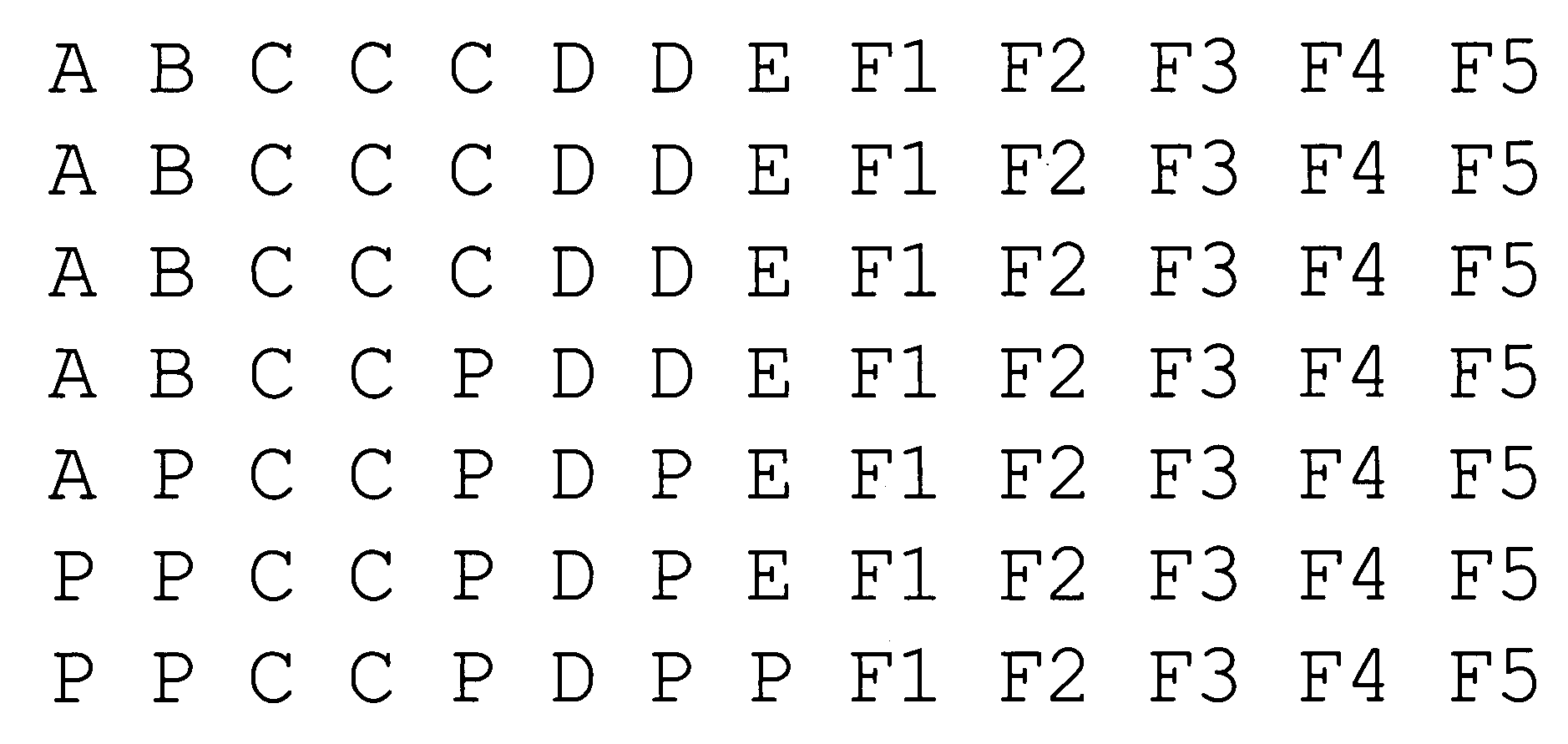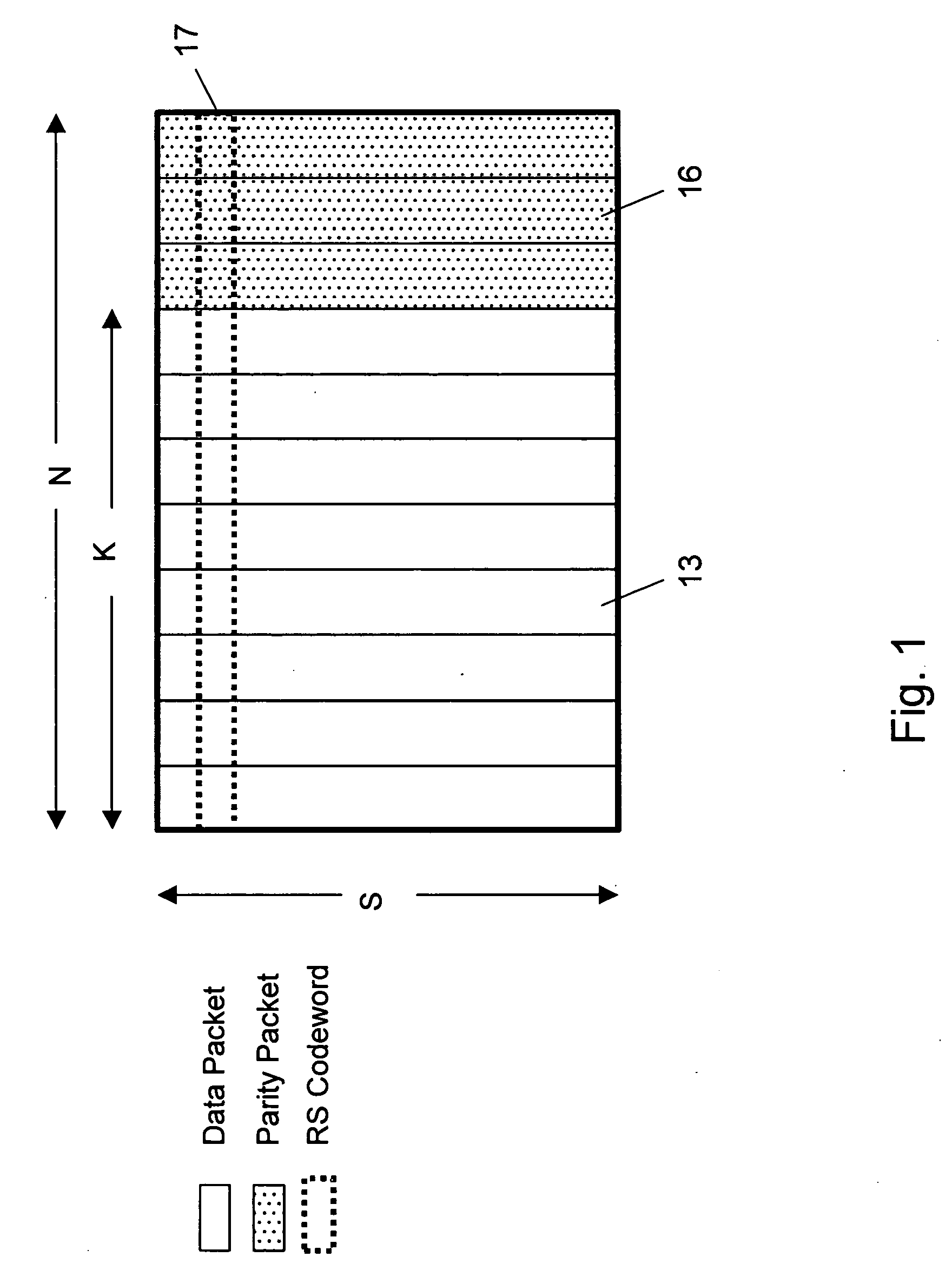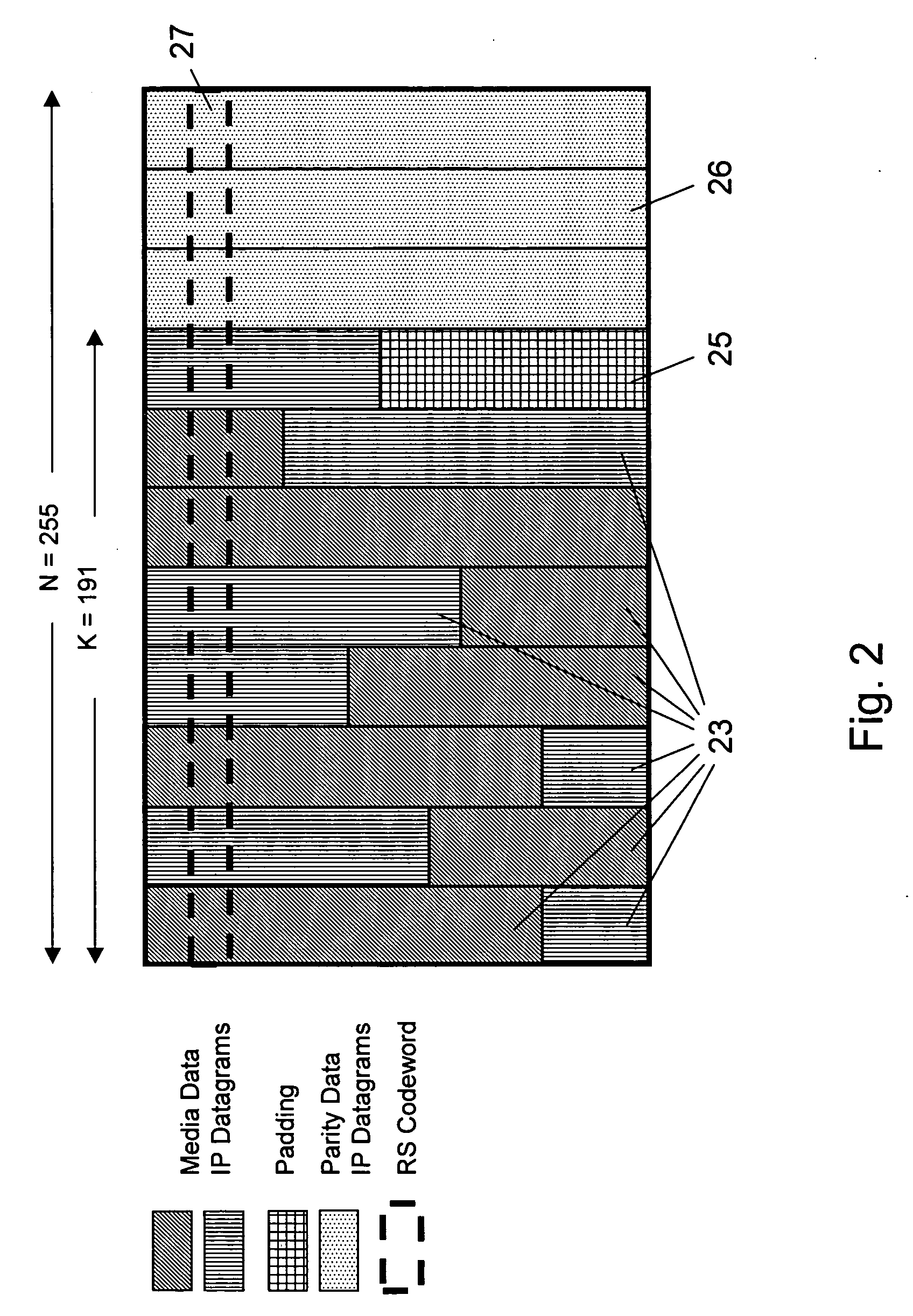Efficient source blocking algorithm for FEC for MBMS streaming
a source blocking and efficient technology, applied in the field of error correction techniques, can solve the problems of data packets being lost on the way, packet based approach described above for mbms download services has severe disadvantages, and significant overhead wastag
- Summary
- Abstract
- Description
- Claims
- Application Information
AI Technical Summary
Problems solved by technology
Method used
Image
Examples
Embodiment Construction
[0031] In embodiments of the subject invention, a hybrid-padding approach for arranging variable size media RTP packets for FEC encoding and decoding may be used. In the conventional RS-padding approach, shorter packets are padded in a source block up to the length of the largest packet in the source block. If the packet size variation is too large, this approach results in a significant amount of padding and correspondingly a large fraction of FEC overhead being used for protecting the padding symbols.
[0032] For example, consider the example shown in FIG. 3. Here A, B, C, D, E denote source (media) symbols belonging to consecutive media RTP packets. The packet lengths are 5, 4, 17, 11, and 6 symbols, respectively. The letter “P” denotes a padding symbol. The total number of padding symbols is (17−5)+(17−4)+(17−17)+(17−11)+(17−6)=42. The total number of media symbols is 5+4+17+11+6=43. Thus there are as many padding symbols as the media symbols. For a fixed amount of FEC overhead, ...
PUM
 Login to View More
Login to View More Abstract
Description
Claims
Application Information
 Login to View More
Login to View More - R&D
- Intellectual Property
- Life Sciences
- Materials
- Tech Scout
- Unparalleled Data Quality
- Higher Quality Content
- 60% Fewer Hallucinations
Browse by: Latest US Patents, China's latest patents, Technical Efficacy Thesaurus, Application Domain, Technology Topic, Popular Technical Reports.
© 2025 PatSnap. All rights reserved.Legal|Privacy policy|Modern Slavery Act Transparency Statement|Sitemap|About US| Contact US: help@patsnap.com



